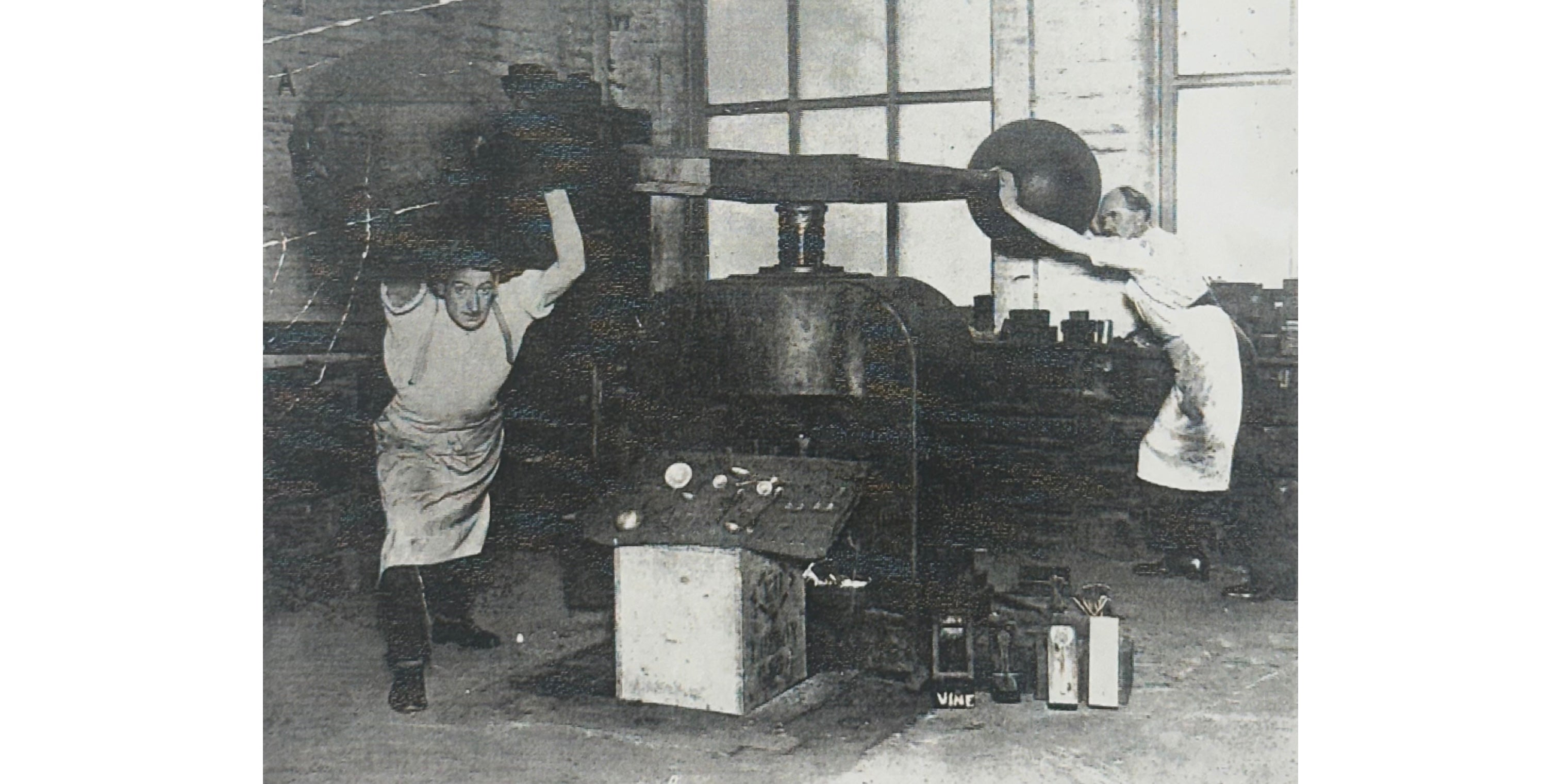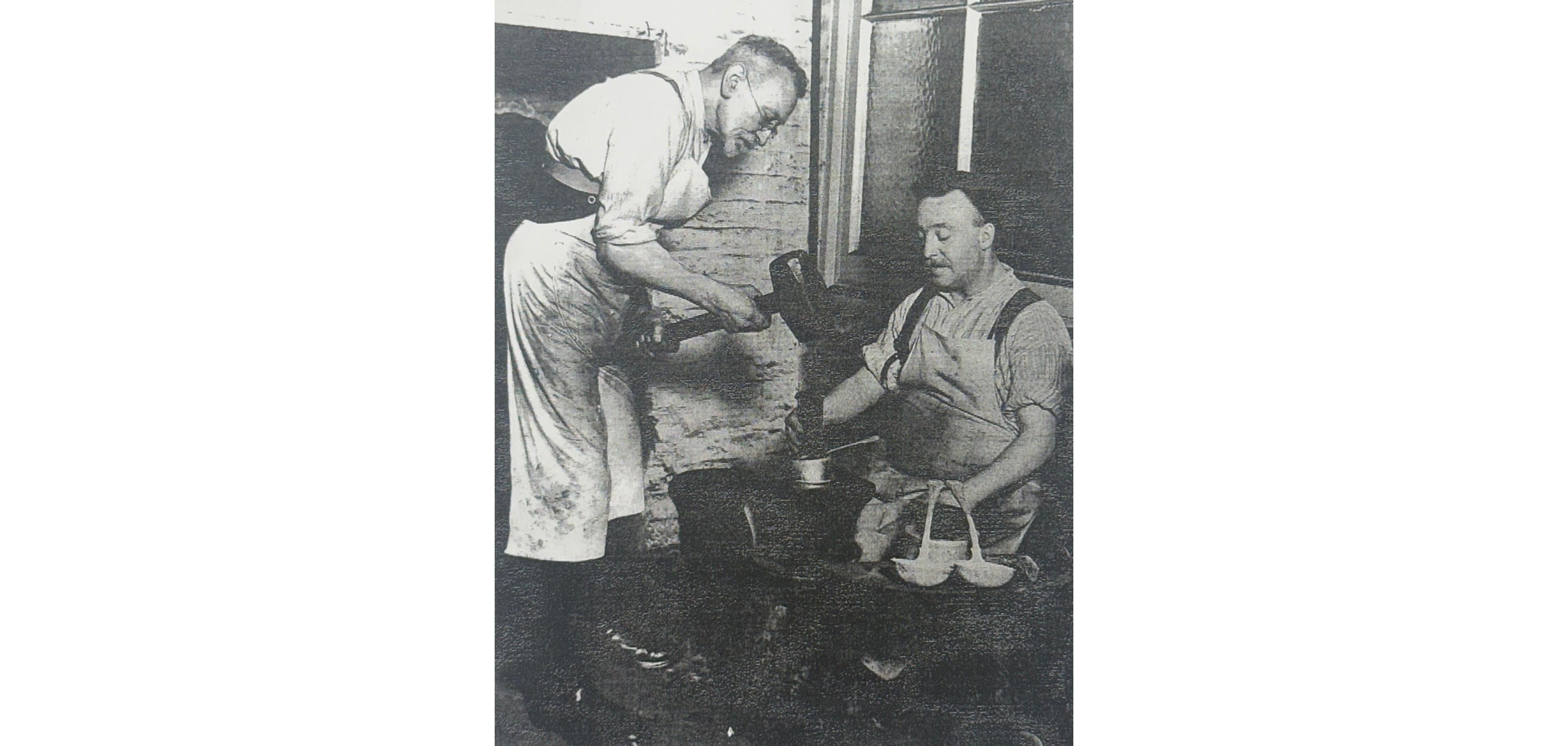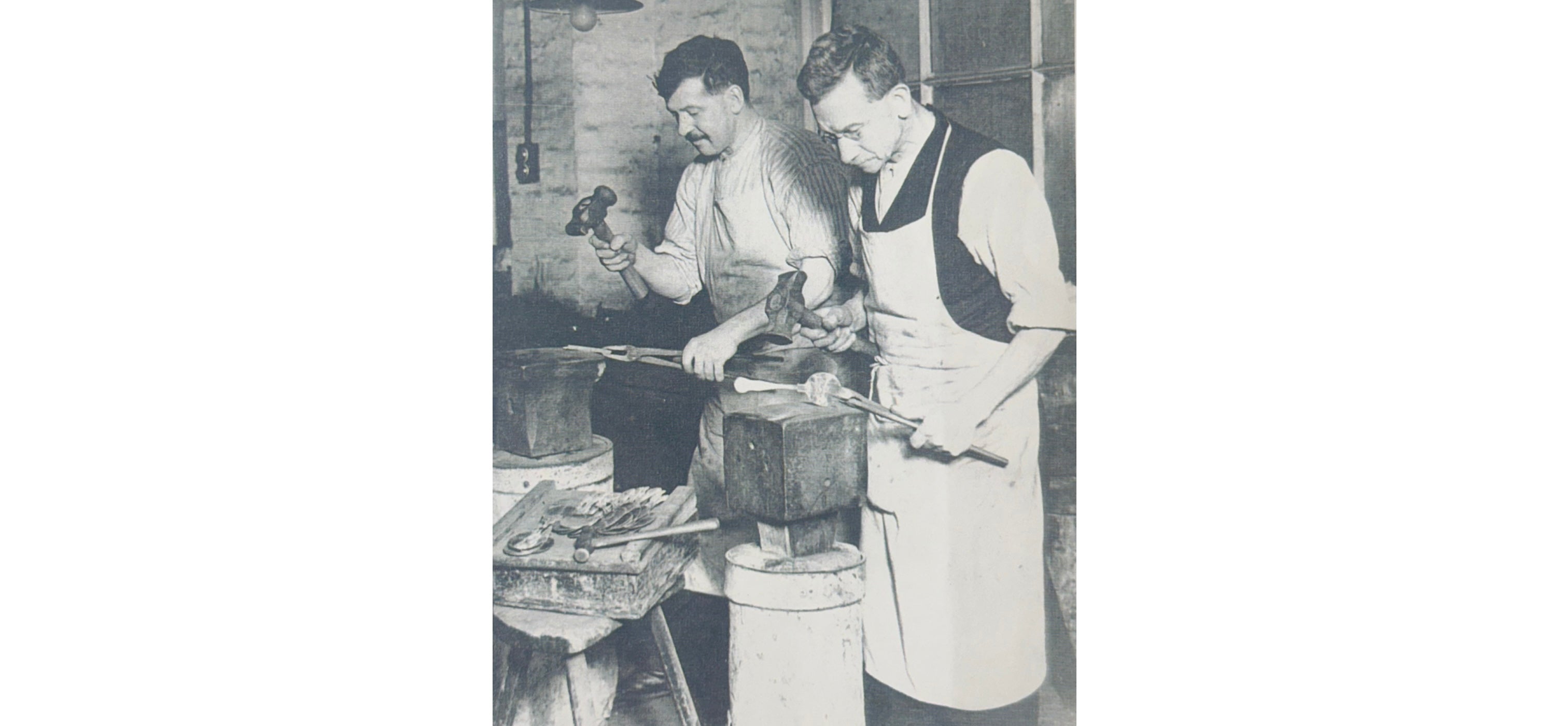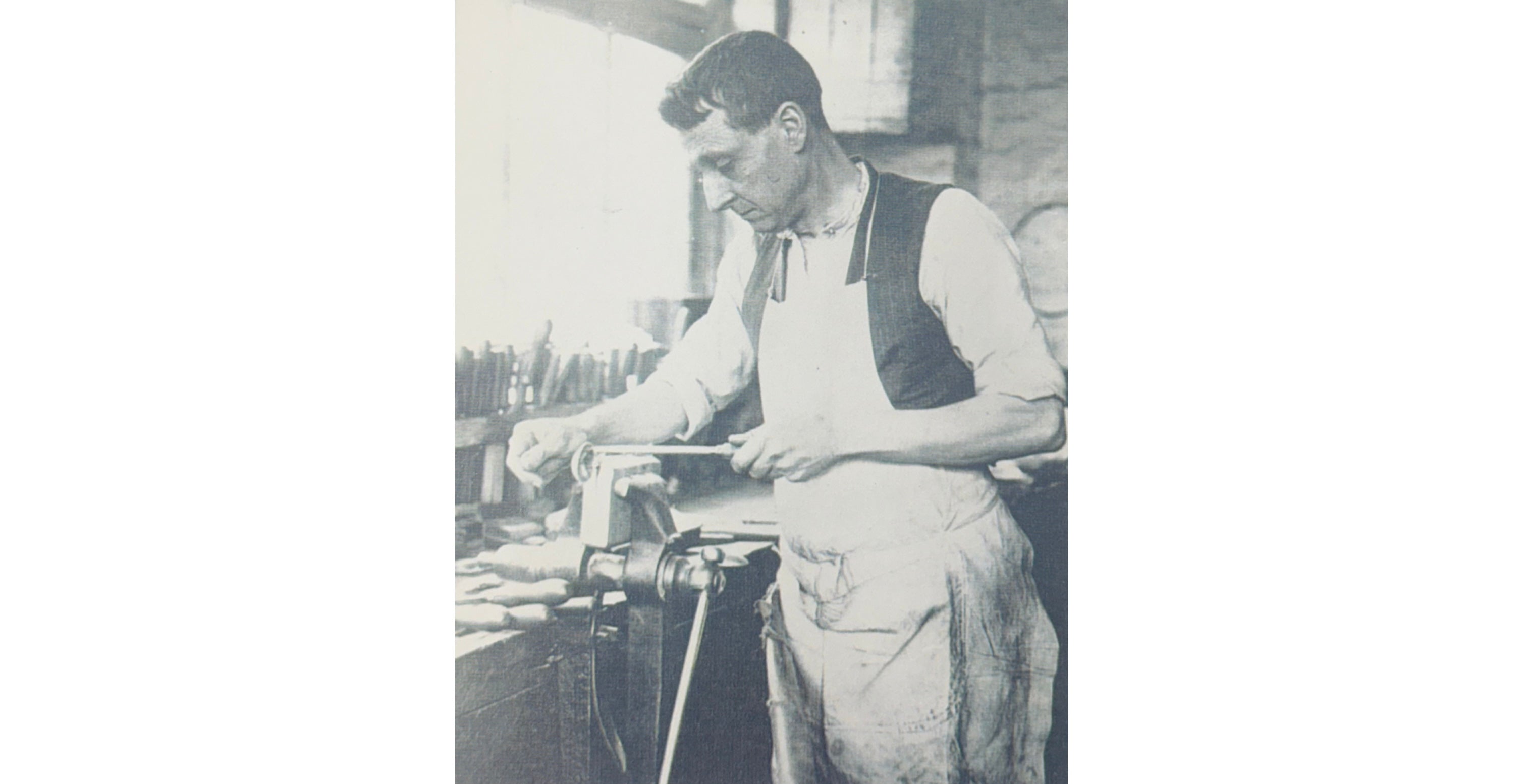Silversmith Companies & Hand Forger's
Over the past several hundred years there has been many fantastic silversmiths & retailers. Hand forged silver cutlery was a huge industry in the eighteenth & nineteenth century, employing thousands of specialised workmen. Below is a brief summary on some important silversmith companies & makers.





CHAWNER & COMPANY
Chawner & Co. was a prominent firm in Victorian London, renowned for producing silver spoons and forks. Established by William Chawner in 1815, the company was managed by his wife Mary following his death in 1834. Mary then partnered with her son-in-law, George Adams, a skilled hand-forging cutler, who took over the business after her passing. In 1883, George Adams sold the company to Holland, Aldwinckle, and Slater.

HOLLAND ALDWINCKLE & SLATER
Holland Aldwinckle & Slater began producing silverware in London in 1838. They purchased Elizabeth Eaton's prominent silversmithing business in 1866 and acquired Chawner & Company, the most significant flatware producer in British history, in 1883.
In 1887, they went on to acquire Robert Henell & Son, a firm established in 1735 that served distinguished clients worldwide. This acquisition propelled Aldwinckle & Slater to greater success.
In 1922, Francis Higgins & Son purchased Aldwinckle & Slater, continuing the legacy of excellence and prestige that their predecessors had achieved, ultimately becoming the premier flatware producers of their time.

FRANCIS HIGGINS
This prominent firm of specialist spoon and fork manufacturers has roots tracing back to the late 18th century. Celebrated for their exceptional craftsmanship, they achieved significant prominence in the trade. They were rivaled only by Chawner & Co., and Holland Aldwinckle & Slater, all of which eventually merged into one company, C.J. Vander, which continued manufacturing in their Hatton Garden workshops until the late 20th century.
Vander produced items for Garrard & Co., the Royal Silversmith, just as the previous entities of the amalgamated companies had done. Francis Higgins entered his first mark on October 31, 1817, from 20 Cursitor Street, Chancery Lane, just a stone's throw from our retail shop premises, where his top-quality hand-forged cutlery is still being sold over 200 years later.

JOSIAH WILLIAMS & COMPANY
This prominent manufacturing silversmith firm was the largest in England outside of London, Birmingham, and Sheffield. Established by W. Woodman in Bristol at the end of the 18th century, it was later succeeded by Robert Williams, who partnered with his sons, James and Josiah Williams. Upon Robert Williams' retirement in 1853, the business was renamed James and Josiah Williams. By 1877, James had passed away, and Josiah partnered with George Maudsley Jackson. Josiah retired in 1879, leaving Jackson as the sole partner.
Following the closure of the Exeter Assay Office in 1883, George Jackson registered the first hallmark for Josiah Williams & Co. at the London Assay Office, while maintaining the Bristol address. In 1884, David Fullerton joined as a partner. Jackson retired in 1915, and Fullerton took sole control, later becoming chairman when the firm became a limited liability company. Fullerton died in 1930, a decade before their factory was destroyed in a major air raid during WWII that devastated many historic buildings in the heart of Bristol.

The Goldsmiths & Silversmiths Company
Goldsmiths & Silversmiths Co., a substantial retail jewelry and silversmithing company, was founded in 1880 at 112 Regent Street, a location previously occupied by John Joseph Mechi. The Goldsmiths and Silversmith Company was initially established by partners William Gibson and John Langman. In 1893, they absorbed Goldsmiths' Alliance Ltd. (later known as A.B. Savoury & Sons) and transitioned into a limited liability company. William Gibson passed away in November 1913 at the age of 74, leaving an estate worth £305,601. About £150,000 of this estate was directed to assist poor and deserving farmers according to his will.
Goldsmiths & Silversmiths Co. were jewelers, silversmiths, and dealers who sold directly to the public at manufacturers' cash prices. The Regent Street building, occupying roughly a quarter of an acre, was rebuilt in 1928. It is now the official residence of Garrard & Co Ltd, the Crown Jewellers, who merged with Goldsmiths & Silversmiths Co Ltd in 1952. The company prided itself on being more than just retailers, offering substantial savings to consumers—between 25 and 50 percent—by selling at prices formerly exclusive to the trade.

C.J VANDER
Alexander Macrae, the company's founder, was initially recorded at 32 Bow Street in Covent Garden. After Martin Goldstein's arrival, the company was renamed Macrae & Goldstein. Goldstein took over in 1878 and relocated to Leicester Square, trading under his own name. In October 1886, Cornelius Joshua Vander, a jeweler and silversmith's son, bought the business. Vander assured clients of his personal care and expertise, retaining all dies, patterns, and most of Goldstein's laborers.
After Vander's death in 1904, his sons Henry and Alfred took over. The company grew post-WWI, launching a secondhand silver department in 1921. In the 1920s, C.J. Vander supplied prestigious stores like Tessier's Bond Street, D & J Welby, Hancocks & Co., and the Goldsmiths & Silversmiths Company. Due to WWII, they relocated temporarily in 1941 and returned to Fetter Lane in 1943, halting production to retrain silversmiths.
Towards the end of WWII, John Hodges, the managing director of the Goldsmiths & Silversmiths Company, contacted Vander's about steel box dies acquired from Francis Higgins. These dies, stored in Edward Barnards and Sons Ltd's basement, were intended for post-war production. The cutlery dies originated from mergers and takeovers involving Eley, Fearn & Chawner, Chawner & Co., William and Elizabeth Eaton, and Holland Aldwinckle and Slater. However, Barnards could not use the massive fly press, with arms sixteen feet across, so Arthur Vander and Goldsmiths & Silversmiths Co. sought alternatives. Vander's explored using the dies in a power-driven press via the Royal Mint, eventually purchasing a secondhand machine that was still in use at their Hatton Garden workshop until it closed.

